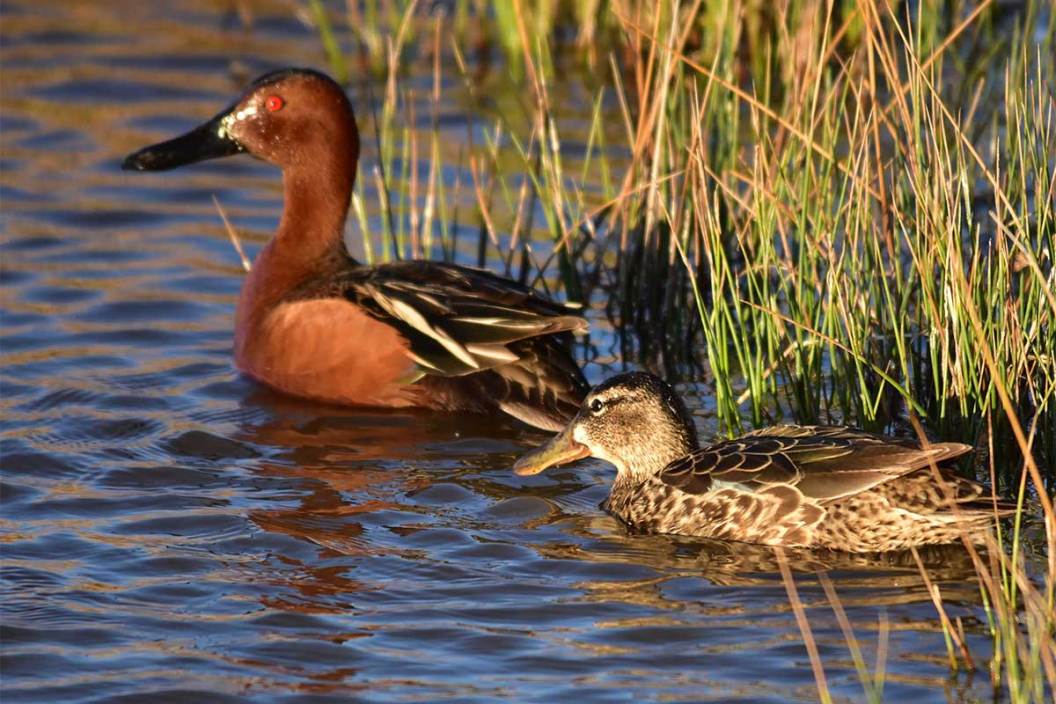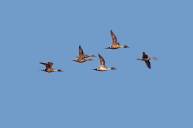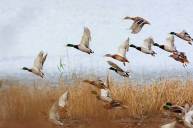Get ready to learn a little more about one of our favorite game birds, the cinnamon teal.
The Anas cyanoptera or cinnamon teal is one of the most easily recognized waterfowl species in North America, but not everyone gets to see it. Living, breeding, and migrating mostly in the west-central and western half of the United States, this dabbling duck has an incandescent plumage that can't be missed.
Whether you prefer to hunt them or watch them, cinnamon teal are a favorite of birders from all walks of life, but unfortunately their numbers are declining.
They may not be the most sought after game bird that flies, but they have a great following that cannot be denied. Any youth hunter that scores a cinnamon teal will never forget it, as they are a sight to behold.
As we usually do when discussing the topic of our favorite game birds, we will turn to the venerable and astute source, The Cornell Lab of Ornithology, to get some of the best information.
Cinnamon Teal Description
Unlike most North American dabbling ducks, the cinnamon teal rarely breeds in the mid-continent prairie region, but is known to have separate breeding populations in both North America and South America.
They have a lustrous green speculum, which is separated from a bluish shoulder patch by a white stripe, and they often sport red eyes.
Cinnamon teal look like no other duck with their amazingly rich, ruddy plumage. As their name suggests, the feathers of the drake are a beautiful array of burnt auburn that absolutely shines in the light. After breeding the males molt this brilliant plumage, and wind up looking much more similar to female and immature birds, and very similar to other teal species, particularly blue-winged teal.
One distinctive way to tell these birds apart is by their longer, wider bill which is fairly black in color. Non-breeding cinnamon teal can be somewhat drab and hard to identify, but males molt back into their reddish body plumage by midwinter, making them more obvious.
Habitat
These beautiful ducks aren't so different than most of their cousins in the waterfowl world as they prefer to reside in freshwater wetlands, especially permanent marshes. Some areas that you will find them, as they are quite adaptable, are streams, reservoirs, ditches, and stock ponds, also readily using other temporary wetlands as well.
Wintering birds that find themselves across the border into Mexico also use reservoirs and wet agricultural fields, even tidal estuaries and mangrove swamps to loaf and find food. Cinnamon teal are interesting in that they sometimes feed like Northern Shovelers, following each other in tight groups and using their bills to takes seeds and aquatic vegetation in a rapidly opening and closing motion. Unlike other dabbling ducks, they do eat insects and other invertebrates such as snails, beetles, and water striders, but it only makes up a small portion of their diet.
Interestingly, the female cinnamon teal will typically locate her nest below matted, dead stems of vegetation in order to completely conceal it on all sides and from above. Tunnels in the vegetation serve as entries and exits.
Hunting the Cinnamon Teal
Any method for hunting these fast moving birds means locating early season hangouts, which involves devoted scouting of your local hunting areas. The best part is that many states have long since recognized this fact and offer an early teal season for all of the varieties including blue and green winged teal, as well as the cinnamon teal.
Setting up on flooded grain fields, shallow sloughs, and open-water swamps is the most likely way to see and shoot these beautiful birds, but stay focused because they move in quickly, leave fast, and are hard to hit.
Knowing where to set up can be tough, and leaving yourself with the option to move at a moment's notice to find birds that may skirt you can be a real advantage. If they like an area, they will come in droves. Find that spot, and you'll see plenty of opportunities.
The Cinnamon Teal
The cinnamon teal, or red teal as it's sometimes known, is a honorable species of waterfowl. You'll need to look sharp for cinnamon teal feeding early in the day at the fringes of shallow wetlands, among the edges of rushes, sedges, and reeds.
As we mentioned, their conservation status is that of a declining population of American birds. This small dabbling duck of western North America is a classic example of a species worth keeping an eye on, and looking out for their well-being.
The adult males are what usually garner all of the attention, as the male cinnamon teal is a site to behold in its full plumage. But for hunters ready to get after it in the early season, it represents one of the great ways to enjoy waterfowl on a yearly basis.
Looking for a little more or even hot lunch for your hunting blind? Follow my webpage, or on Facebook and YouTube.
Products featured on Wide Open Spaces are independently selected by our editors. However, when you buy something through our links, we may earn a commission.
NEXT: DUCK HUNTING IN SALTWATER: THE INS AND OUTS OF HUNTING WATERFOWL ON THE COAST





